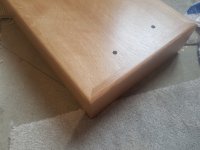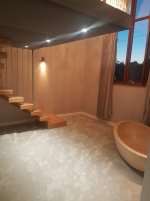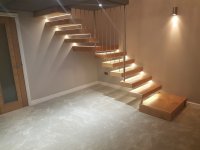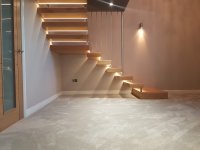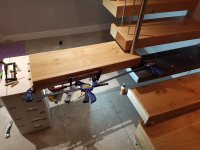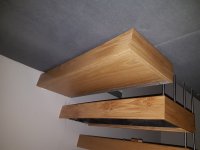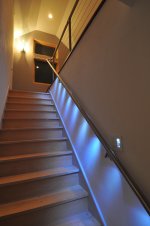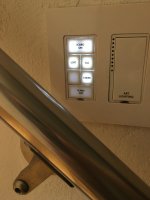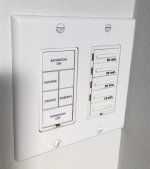antss said:
Cheese's "switch" is a lighting control keypad - Insteon if I had to hazard a guess.
Winner, winner, chicken dinner. [thumbs up]
[member=61604]RickyL[/member]
Insteon manufactures a variety of switches that actuate other switches or modules strictly through RF communication. An Insteon 2-way or 3-way switch requires
NO traveler wire, they're great for older construction where running additional wiring is problematic. The switch pads can be laser engraved for easy identification with your choice of nomenclature and they are illuminated. The dimmer switches have user adjustable ramp rates, so every variable can be changed through a computer. They're pretty slick.
For the stair lighting, electricity is provided to power the switches on the wall and electricity is provided to power the switches in the loft, however there is no physical wiring
between any of the switches. Everything is actuated via RF communications.
In the existing bathroom, I wanted to install recessed lighting, and vanity lighting. I could install the lights and get power to the lights but it was impossible to connect all of the wiring to all of the switches that I needed, there simply wasn't enough room. The solution was to use remote control modules mounted in plastic outlet boxes that were installed behind the medicine cabinet and then actuate them through a 5-button key pad by using RF.

